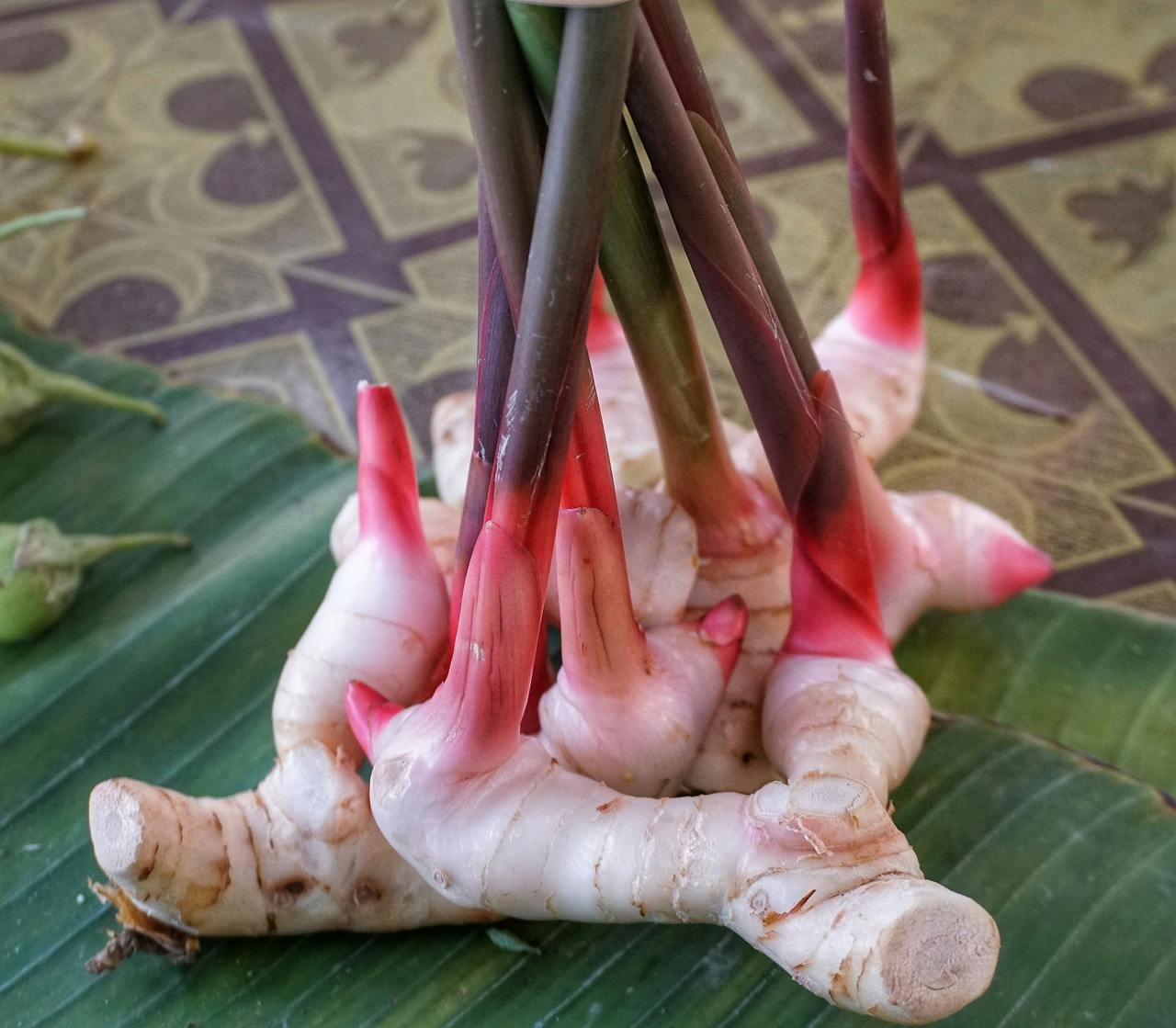your cart
Your cart is empty.
General Articles
What is Galangal & How to Use it
Galangal is a spice in Asian cuisine similar to ginger, but with a sweeter, sharper taste. Discover how to use it in your recipes.

Southeast Asian cuisine is full of fantastic herbs, leaves and spices that give it that unique taste and aroma. Many of those ingredients, such as kaffir leaves and lemongrass, are now quite commonly known, but there are still so many flavours to discover.
One of our favourite ingredients used in Asian food, and Thai food in particular, is galangal. Many people consider it the secret to that distinctive spicy-yet-sweet taste found in Thai soups and curries. But what is galangal, and how do you use it?
What is Galangal?
Galangal is an aromatic spice derived from the galangal root. It is sometimes known as Thai or Siamese ginger due to its likeness to the ginger root. Galangal is a lesser-known but essential component of many Southeast Asian cuisines. It is commonly used as a spice in curries, broths and soups but can also be used more experimentally in things such as teas.
Galangal can be found in many forms. You can buy galangal paste or powders from most supermarkets. You can also find fresh galangal roots here at Oriental Mart.
What’s the Difference Between Galangal and Ginger?
Both galangal and ginger have a similar shape and appearance. However, galangal has a sharper, fruitier and slightly sweeter taste compared to ginger. The galangal plant is part of the ginger family, which is why fresh galangal looks very similar to ginger roots. However, on closer inspection, you can see some differences. Galangal roots tend to be paler than ginger, and their skin is usually smoother. Galangal roots can also have white, pink or yellow flesh.

How to Use Galangal
You can use fresh galangal root in a similar way to how you would use ginger.If you’re preparing an authentic Thai curry or Indonesian soup, recipes will usually ask you to peel the galangal root and grate it into the sauce or broth. You can add whole slices when cooking, but the galangal root in this form is tough and inedible, so you need to remove it when serving.
Galangal pastes and powders can be added to dishes in a similar way. Simply add the required amount to your soup for a wonderfully authentic dish.
Galangal Root Recipes
There are many different Southeast Asian dishes where you can use Galangal roots to create truly authentic flavours. The most common tend to be soups and curries, where galangal adds that classic sharp, spicy yet sweet flavour synonymous with the cuisine.
Thai soup recipes are the perfect opportunity to use galangal. Tom yum is one of the most famous soups in the world with a whole blend of flavours, and fresh galangal can help add that Thai zing that we know and love.
Another popular use is in Thai curries . Famous for its incredible ability to balance sweet, sour and fresh tasting notes, galangal is the perfect spice to bring these flavours together. Use galangal in a Thai red curry to unlock those authentic taste sensations.
Galangal can also be used as part of a marinade in a simple Thai satay . Combined with peanut-flavoured sauces, galangal adds a hint of spice while keeping that sweet taste at the forefront.
Galangal is one of those special spices that can quickly and easily elevate your Asian cuisine to the next level. We recommend experimenting with this famous root and discovering its unique taste for yourself!
For more delicious aromatic herbs and ingredients, see what's in stock at our online Thai supermarket.
this site uses cookies
We and our advertising partners use cookies on this site and around the web to improve your website experience and provide you with personalised advertising from this site and other advertisers. By clicking allow, you accept the placement and use of these cookies for these purposes. Learn More



